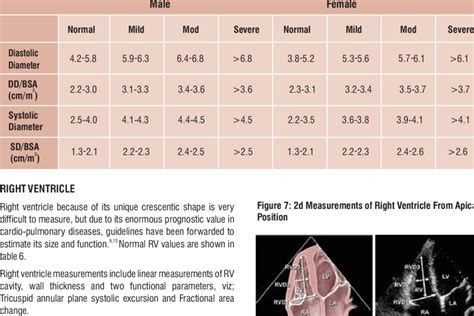lv height | normal lv diameter lv height To calculate the left ventricular mass index (LVMI), follow these steps: Determine the left ventricular mass using the LV mass equation. Divide the value obtained in step 1 by the body surface area (BSA), calculated based on the patient's weight and . Kannabidiola (CBD) eļļa ir produkts, kas iegūts no kaņepēm. Tas ir kanabinoīdu veids, kas ir ķīmiskas vielas, kuras dabiski atrodamas kaņepes augos. Lai gan tas nāk no kaņepes augiem, CBD nerada eiforijas efektu vai jebkāda veida intoksikāciju - to izraisa cits kanabinoīds, kas pazīstams kā THC. .
0 · normal lv size and function
1 · normal lv dimensions
2 · normal lv diameter
3 · lv trainer size chart
4 · lv size normal
5 · lv size chart bag
6 · lv size chart
7 · left ventricle size chart
Off the Strip™ Las Vegas Area’s 【 Best CBD Shops 】 Exclusive ratings & reviews of 35 CBD Shops in Las Vegas, Henderson & North Las Vegas, Nevada.
This LV mass index calculator helps diagnose the type of cardiac hypertrophy based on LVMI and relative wall thickness.
This LV mass index calculator helps diagnose the type of cardiac hypertrophy based on LVMI and relative wall thickness.
Uncontrolled high blood pressure is the most common cause of left ventricular hypertrophy. Complications include irregular heart rhythms, called arrhythmias, and heart failure. Treatment of left ventricular hypertrophy depends on the cause. Treatment may include medications or surgery. To calculate the left ventricular mass index (LVMI), follow these steps: Determine the left ventricular mass using the LV mass equation. Divide the value obtained in step 1 by the body surface area (BSA), calculated based on the patient's weight and . There are numerous voltage criteria for diagnosing LVH, summarised below. The most commonly used are the Sokolow-Lyon criteria: S wave depth in V 1 + tallest R wave height in V 5 or V 6 > 35 mm. Voltage criteria must be accompanied by non-voltage criteria to be considered diagnostic of LVH. Voltage Criteria. Each echocardiogram includes an evaluation of the LV dimensions, wall thicknesses and function. Good measurements are essential and may have implications for therapy. The LV dimensions must be measured when the end-diastolic and end-systolic valves (MV and AoV) are closed in the parasternal long axis (PLAX) view.
normal lv size and function
Left ventricular hypertrophy (LVH) is a condition in which an increase in left ventricular mass occurs secondary to an increase in wall thickness, an increase in left ventricular cavity enlargement, or both.
ECG changes in left ventricular hypertrophy (LVH) and right ventricular hypertrophy (RVH). The electrical vector of the left ventricle is enhanced in LVH, which results in large R-waves in left-sided leads (V5, V6, aVL and I) and deep S-waves in right-sided chest leads (V1, V2).LVM is the acronym for Left Ventricular Mass. LV mass (LVM) is a vital prognostic measurement we obtain with echocardiography to manage hypertension. RWT is the acronym for Relative Wall Thickness and is an additional reference value that can help further classify the type of LVH.
Chapter content. Figure 1. Calculation of left ventricular mass. mass LV = 1.05 (mass total – mass cavity) LV = left ventricle; 1.05 = mycoardial mass constant. Left ventricular hypertrophy (LVH) Left Ventricular Measurement. Left ventricular mass is generally calculated as the difference between the epicardium delimited volume and the left ventricular chamber volume multiplied by an estimate of myocardial density.
normal lv dimensions
This LV mass index calculator helps diagnose the type of cardiac hypertrophy based on LVMI and relative wall thickness.
Uncontrolled high blood pressure is the most common cause of left ventricular hypertrophy. Complications include irregular heart rhythms, called arrhythmias, and heart failure. Treatment of left ventricular hypertrophy depends on the cause. Treatment may include medications or surgery. To calculate the left ventricular mass index (LVMI), follow these steps: Determine the left ventricular mass using the LV mass equation. Divide the value obtained in step 1 by the body surface area (BSA), calculated based on the patient's weight and . There are numerous voltage criteria for diagnosing LVH, summarised below. The most commonly used are the Sokolow-Lyon criteria: S wave depth in V 1 + tallest R wave height in V 5 or V 6 > 35 mm. Voltage criteria must be accompanied by non-voltage criteria to be considered diagnostic of LVH. Voltage Criteria. Each echocardiogram includes an evaluation of the LV dimensions, wall thicknesses and function. Good measurements are essential and may have implications for therapy. The LV dimensions must be measured when the end-diastolic and end-systolic valves (MV and AoV) are closed in the parasternal long axis (PLAX) view.
normal lv diameter
Left ventricular hypertrophy (LVH) is a condition in which an increase in left ventricular mass occurs secondary to an increase in wall thickness, an increase in left ventricular cavity enlargement, or both.ECG changes in left ventricular hypertrophy (LVH) and right ventricular hypertrophy (RVH). The electrical vector of the left ventricle is enhanced in LVH, which results in large R-waves in left-sided leads (V5, V6, aVL and I) and deep S-waves in right-sided chest leads (V1, V2).
LVM is the acronym for Left Ventricular Mass. LV mass (LVM) is a vital prognostic measurement we obtain with echocardiography to manage hypertension. RWT is the acronym for Relative Wall Thickness and is an additional reference value that can help further classify the type of LVH.Chapter content. Figure 1. Calculation of left ventricular mass. mass LV = 1.05 (mass total – mass cavity) LV = left ventricle; 1.05 = mycoardial mass constant. Left ventricular hypertrophy (LVH)

lv trainer size chart

lv size normal
lv size chart bag
CASTROL AXLE LIMITED SLIP 85W-140. CASTROL AXLE LIMITED SLIP 90. CASTROL AXLE LONG DRAIN. CASTROL DYNADRIVE 80W-90. CASTROL SYNTRAX E 80W-140. CASTROL SYNTRAX LONG LIFE 75W-90. CASTROL .
lv height|normal lv diameter
























